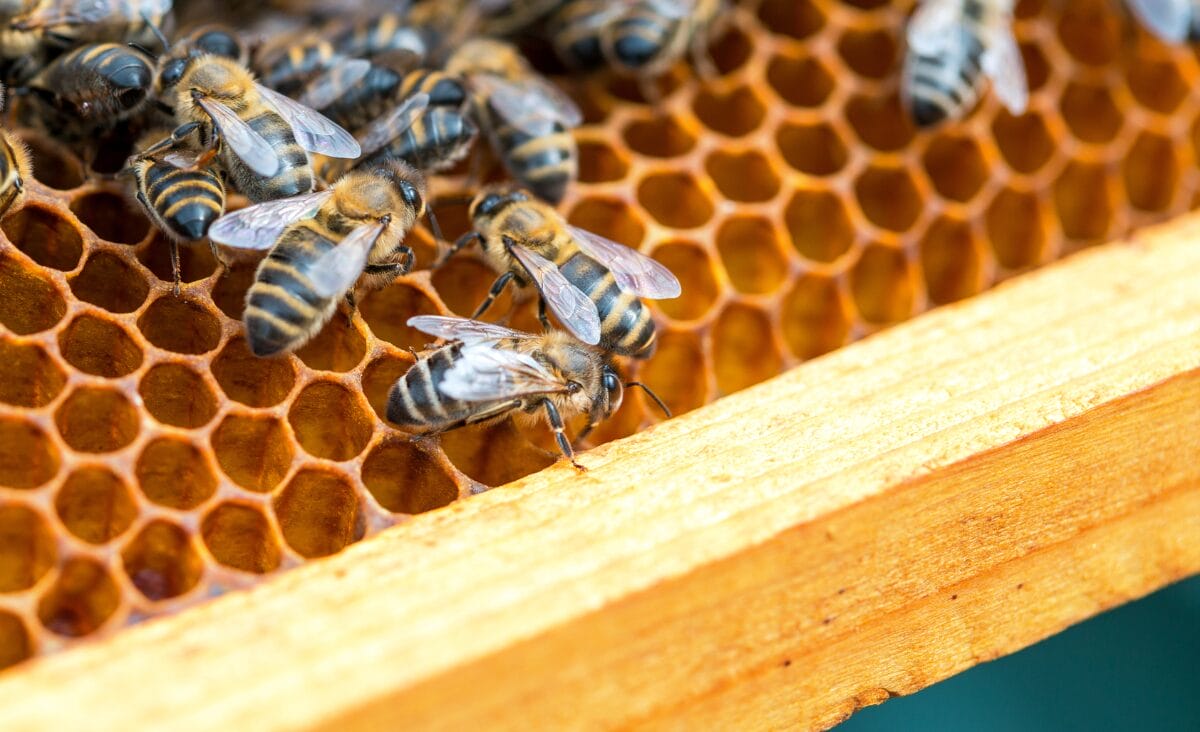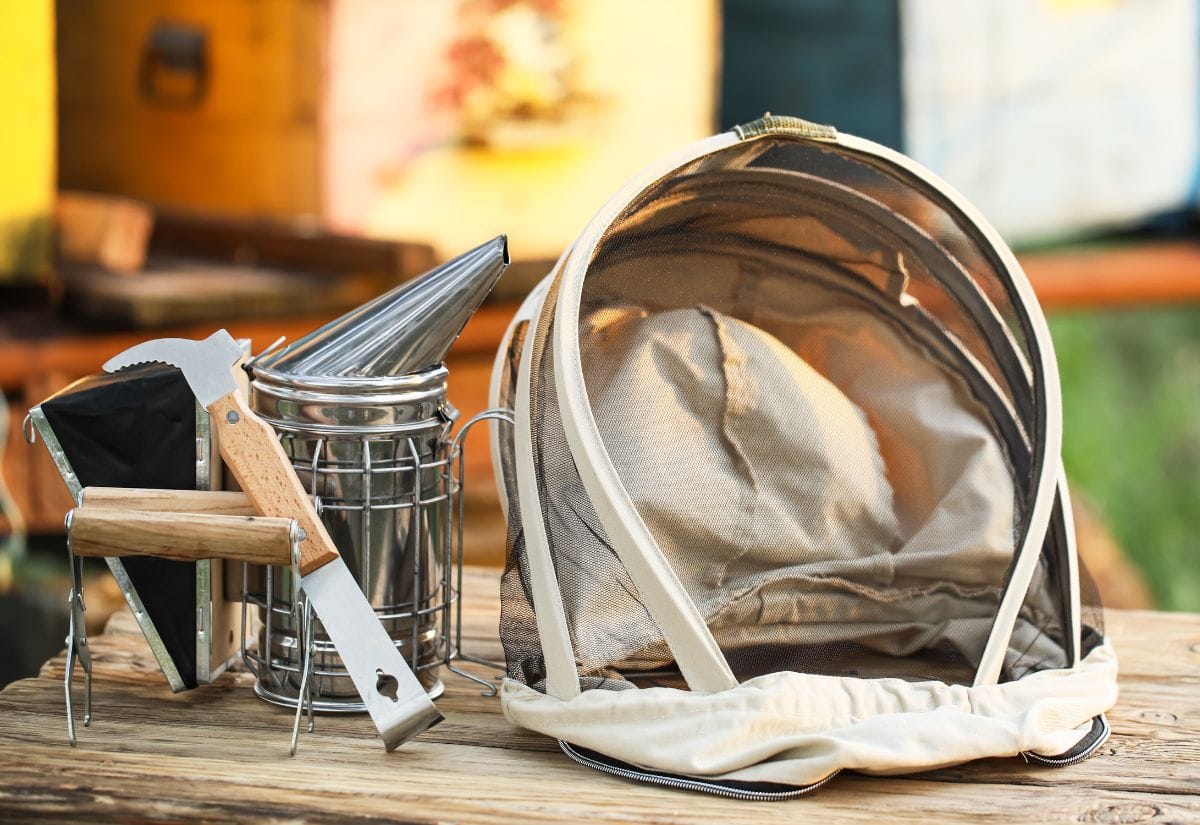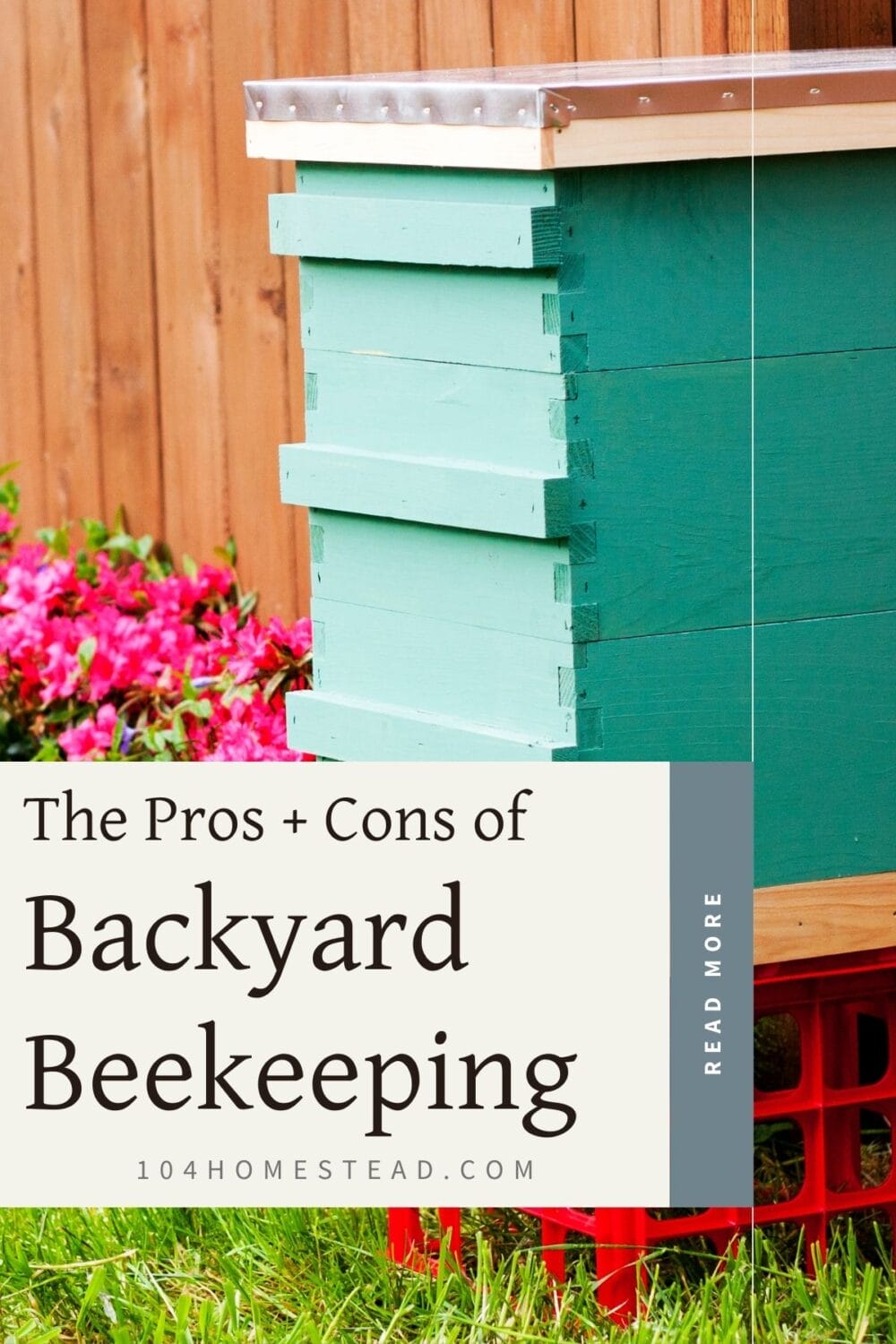Is Beekeeping Right for Your Homestead? The Pros and Cons
Find out the pros and cons of adding bees to your homestead to make it more sustainable so that you can enjoy the taste of fresh honey.

It is possible to feel both charmed and scared by the thought of bees buzzing around your homestead. If you want to add beekeeping to your homesteading activities, this post talks about the many benefits and important things to keep in mind.
Bees do a lot more than just make honey. They are also very important for pollination, which is good for your garden and local farming. It is important to know how bees behave, what they need, and how they will affect your homestead if you decide to keep bees.
Benefits of Adding Bees to Your Homestead
Bees can make your homestead better by keeping your garden productive, making honey, and helping the environment.
Enhanced Pollination for Garden and Crops
Bees are nature’s most prolific pollinators, and their presence on your homestead can lead to:
- Grow more fruits and vegetables: When bees visit flowers, they spread pollen, which helps plants produce fruit.
- Higher-quality food: Cross-pollination helps fruits and vegetables grow healthier and stronger.
- Garden diversity: Bees pollinate many kinds of plants, which helps make the garden ecosystem diverse and lively.
Bees are essential for the pollination of many crops and flowers, not just for their beauty but for the health of our food system.
Dr. Elizabeth Capaldi, Bee Behavior Expert
Sustainable Honey Production
Beekeeping gives homesteaders a steady supply of honey, a natural sweetener that tastes better and is higher-quality than commercially processed alternatives. This honey can be used in many ways around the house, from adding sweetness to foods and drinks to making homemade medicines and skin care products.
Homesteaders can make extra money when they have more than they need. Honey can be sold locally at farmers’ markets, through online platforms, or directly from the homestead.
Considerations Before Starting Beekeeping
Beginner beekeeping requires careful planning and knowledge of the problems you might face, such as time and money, and learning how to manage bees.
Time and Financial Investment
Setting up the system and keeping it running takes time, work, and money, which may include buying equipment and bee colonies.
Initial Setup Costs
There are both one-time and ongoing costs to starting beekeeping on your homestead. The average one-time cost can vary a lot depending on the quality and quantity of supplies you choose. Here is a list of the things you need and how much they usually cost, along with some money-saving tips:
- Safety gear is necessary for any beekeeper to avoid getting stung. This could be a jacket or a full bee suit, as well as a hat with a veil. Prices depend on the quality and can range from $40 to $150.
- The beehive is the most important part of keeping bees. A standard 10-frame Langstroth hive costs about $150 on average. It comes with ten frames with bases, the bottom board, the inner and outer covers, and a deep brood box.
- A hive stand is needed to keep the hive off the ground and out of the way of water and pests. Many beekeepers use cinder blocks or pallets instead of metal stands, which can cost up to $70.
- As for the bees themselves, a package of them can cost anywhere from $150 to $250, depending on how much demand there is and how many are available.
- Consumables: These include sugar for feeding, smoke fuel, paint for the hive, and medicine to kill Varroa mites. Plan to spend $50 to $100 a year on these things.
- Extra costs, like paint for the hives, winter supplies, and maybe an electric fence if you live in bear country, can add up to $716 on average.

To save a few bucks, consider the following:
- DIY Hive Stand: Utilize readily available materials like wood or metal to construct your hive stand.
- Education: Seek free resources, borrow books, or find inexpensive or free online courses and local beekeeping associations for training.
- Second-hand Equipment: Look for used beekeeping gear or connect with local beekeeping clubs to find deals on supplies.
Ongoing Expenses
Continuous costs in beekeeping include many things needed to keep hives healthy and productive all year. These include the cost of sugar and pollen patties for feeding bees, especially important during the initial establishment of the colony or in preparation for winter, which can range from $20 to $95. Another important cost that must be met to keep bee populations healthy is varroa mite treatment.
Ongoing costs will include replacing parts of the hive that get worn out or need to be upgraded, as well as the possibility of growing your apiary. Putting money into these areas will help your beekeeping last and succeed, which will lead to a homestead apiary that can thrive.
Tip: If you are just starting out, talk to other beekeepers in your area or join a beekeeping association to get help and advice. Their knowledge can help you a lot when it comes to the specifics of beekeeping in your area.
Time Commitment
Beekeeping takes some time, and the amount of time needed changes throughout the year as bee activity and hive productivity change with the seasons. Beekeepers must set aside time to inspect the hive on a regular basis. These inspections are important for keeping an eye on the colony’s health, finding and getting rid of problems like diseases or pests, and managing the hive’s resources. Each hive may need several hours of work each month to do these inspections and other maintenance tasks like feeding, treating for Varroa mites, and getting ready for winter.
You need to set aside time to collect honey, which is usually done once or twice a year, depending on how productive the hive is and the weather where you live.
Legal and Neighborhood Considerations
Prior to introducing bees to your farm, it is important to learn about the local laws and think about your neighbors.
Wherever you live, sometimes even down to the zip code, your beekeeping laws will tell you specifics like where to put your hives and how many you can have. It’s important to find out more about these laws by going to your local government’s environmental or agricultural department.
Keeping good relationships with your neighbors is super important. This includes placing the hives in a way that causes the least amount of disturbance and telling people about the benefits of keeping bees. Chemicals should be avoided at all costs in urban areas, and bees should be able to get to water and food sources without getting on neighboring properties.
You can also get help and advice by joining a local beekeeping association.
Frequently Asked Beekeeping Questions
Starting to keep bees on your homestead opens up a world where the honey you make will benefit more than just your pantry. The sustainable honey that is collected can be used to make a wide range of treats. They add a touch of nature to your cooking adventures.
Adding certain herbs to your garden not only helps your bees but also creates a healthy, diverse ecosystem right in your own backyard. These carefully chosen plants bring in good pollinators and make the soil healthier, which helps a permaculture garden support itself and the critters that live in it. For bees and other wildlife, using eco-friendly methods in your yard and garden creates a safe haven, protecting the delicate balance of our ecosystem.
If you’ve found value in this blog post and enjoyed reading it, why not share it with your Pinterest community? Pin the image below and spread the love!

Having bees on your homestead can be good for the environment, help your gardening, and even give you an extra way to make money through honey and other bee products. But it is important to think about how much time, effort, and money the benefits will cost. With proper preparation and education, beekeeping can be a rewarding addition to homestead life.
Have you considered adding bees to your homestead? Share your thoughts or questions in the comments below!

